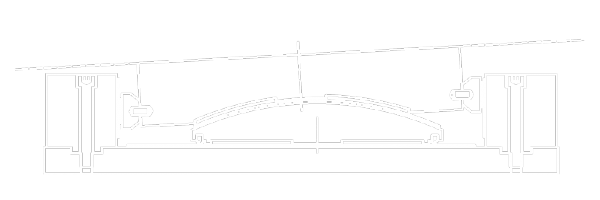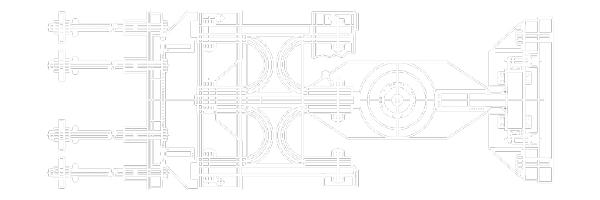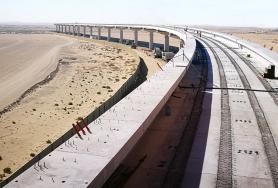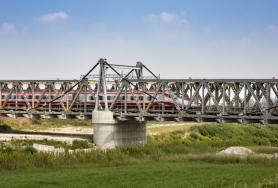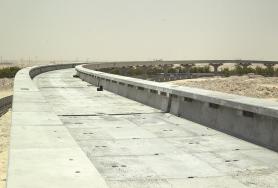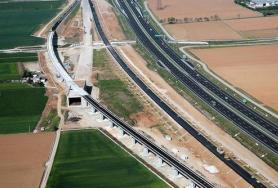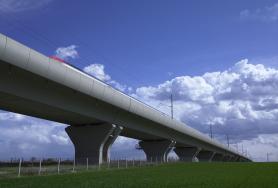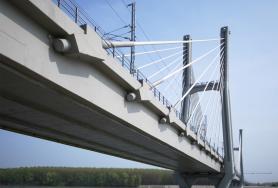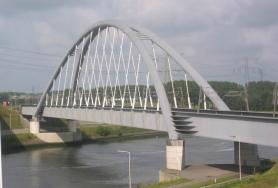RAILWAY BRIDGES & VIADUCTS
Advantages
The TENSA technologies, widely applied in both Bridges and Viaducts, are meant to:
- Transfer vertical and horizontal loads and allow deck structural movements and rotations (bearings and expansion joints)
- Protect structures from seismic action or, in general, from dynamic actions (i.e. wind)
- Increase concrete and steel structure performances by strengthening them and, consequently, allowing for big spans to be reached (post tensioning and stay cables)
The technology of ground anchoring is widely used especially as far a slope consolidation and retaining walls are adopted.
At this location, bearings, shock transmitter devices and steel restraints can be installed.
Sometimes the design prescribes the use of post tensioning along the trunk of the column to give compression and reduce instability.
Structures, indeed, undergo displacements, rotations and deformations caused by acting loads (of static, dynamic, thermic nature etc.) or by phenomena such as shrinkage and creep, linked to the maturation of materials.
Movements, rotations and deformations need to be allowed for and contemplated where strictly necessary and in accordance with the designer’s constraining system.
All bearings must have dielectric characteristics (min 1 Ω) in order to protect the structure against the attack from the stray currents.
The typical bearings used in railways structures are the spherical bearings, which allow a rotations up to ±3 degrees. For decks with length < 10m and for particular girder types, it is also possible to use rubber and pot bearings.
The following types of bearings can be supplied:
- Fixed bearings, which allow rotation between two structural elements and transfer the vertical and horizontal loads
- Guided sliding bearings, which transfer vertical loads, allow rotation between two structural elements, displacement in one single direction and transfer lateral load in the fixed one
- Free sliding bearings, which transfer vertical loads, allow rotation between two structural elements and displacements in all plan directions

STUs are hydraulic devices, able to create, only for impulsive external force, a temporary rigid connection between two parts of the structure.

The TENSA post tensioning systems are meant to give compression stresses to concrete with the use of post tensioning tendons made of steel strands or steel bars.

Bridge and viaduct decks are currently built with reinforced concrete, steel or composite structures. Post tensioning is a highly efficient structural reinforcement system that offers many benefits in a wide range of construction, repair and rehabilitation applications. TENSA has developed its electrically insulated post tensioning to meet the demand for a total and permanent protection of post tensioning tendons from corrosive agents. This has a very successful application to protect structures against the attack from the stray currents; railway structures are frequently subject to corrosion originated from such phenomenon.
The strand technology can be used for cable stayed bridges and viaducts (stays are used to connect pylons to deck, allowing a considerable increase of span length) or arch bridges and viaducts (stays act as vertical or inclined hangers connecting arch to deck).
Expansion joints are devices designed to absorb the movements of the structure due to temperature variations, creep, shrinkage, seismic actions, wind and else. Expansion joints are designed to allow continuous traffic between the decks and among deck and abutments offering a safe and comfortable passage.
Railway joints must be installed under ballast and be dielectric.

In cable stayed bridges concrete pylons are often reinforced with post tensioning for both adding compression in vertical direction and increasing horizontal shear forces induced from the cable stays.

